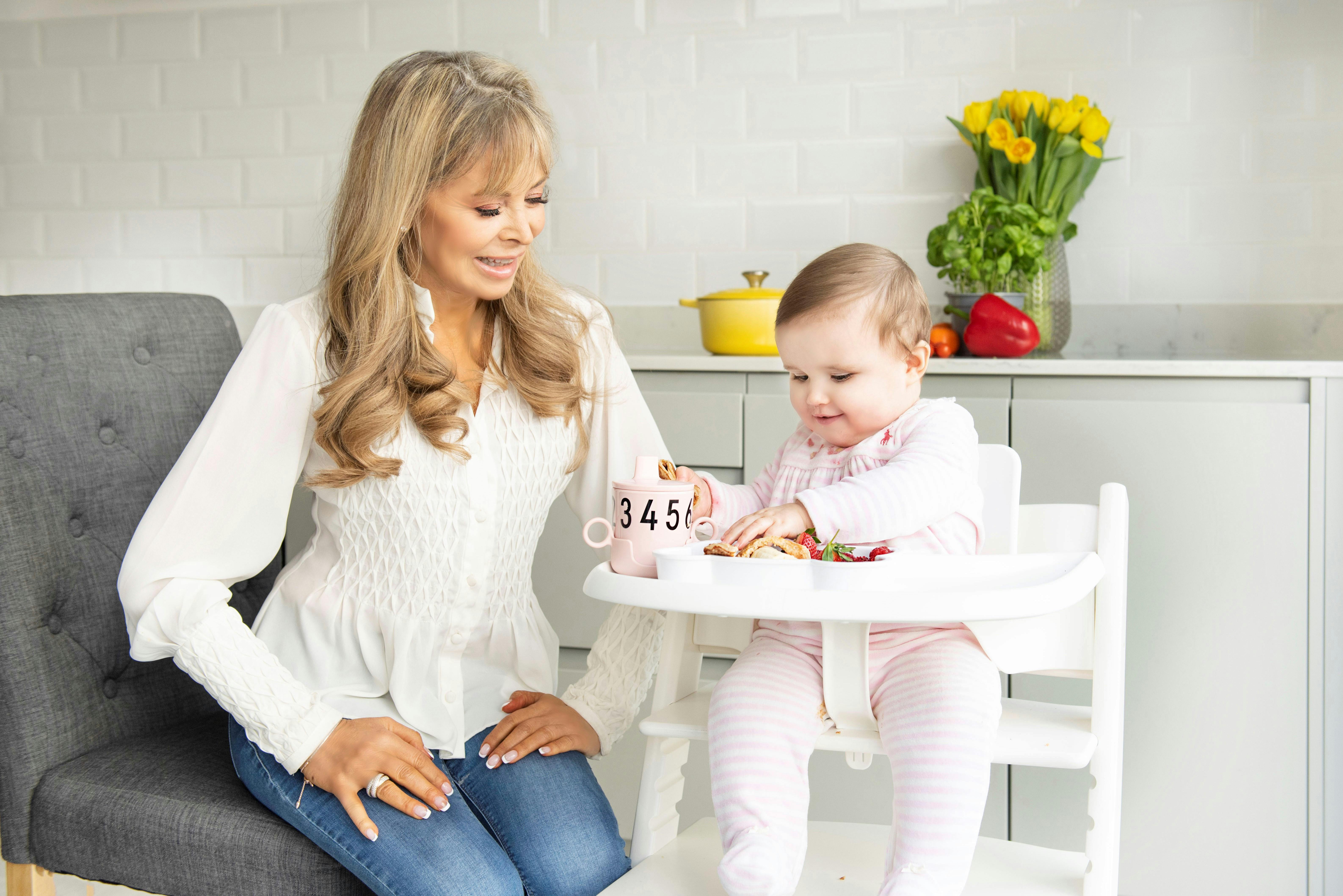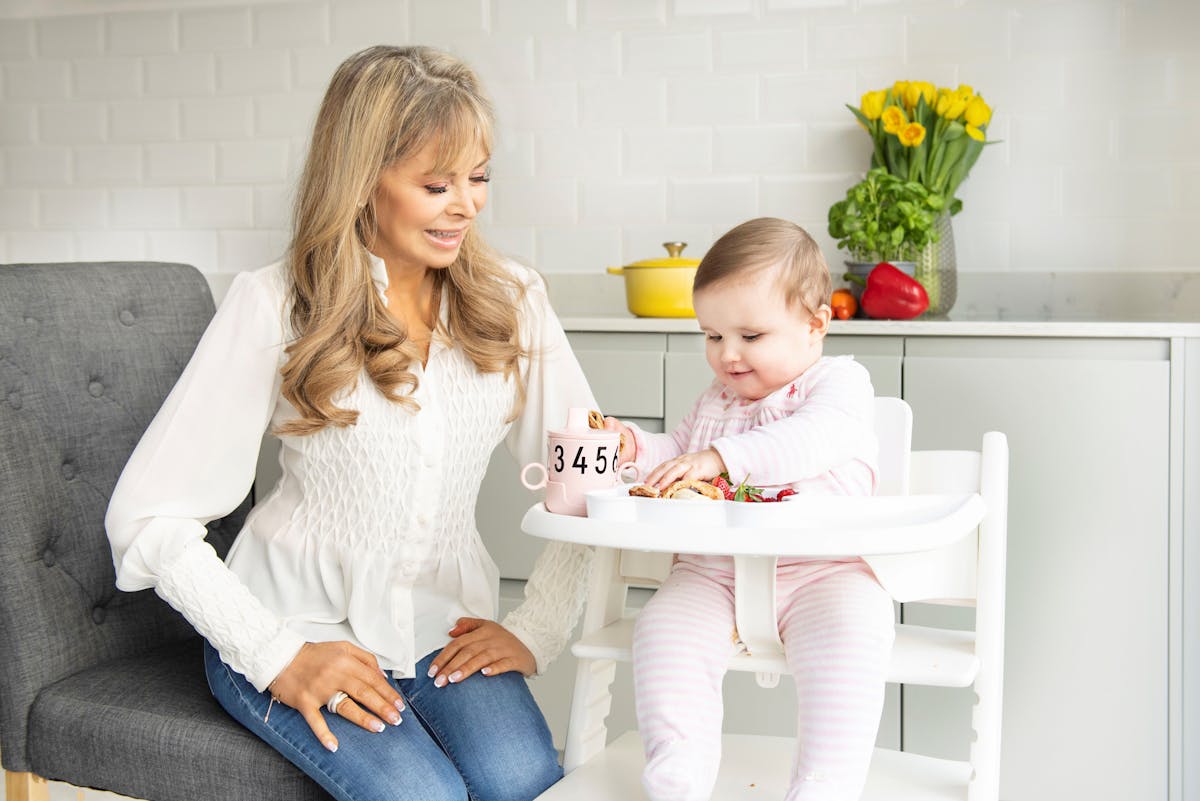Baby weaning SHOULD be a really fun milestone, but in all honesty, when you’re faced with so much conflicting advice…AND the pressure to fill them with goodness, it’s so easy to feel like you’re on the back foot before you’ve even begun. That’s where my straight-talking, super practical online weaning course is here to help! Created in partnership with the Early Years Nutrition Partnership and designed to fit around you and your baby, I want to empower families and childcare providers to feel confident and prepared when it comes to introducing food.
My easy to follow bite-sized audio tutorials cover off every step of feeding baby until they reach 12 months. I give you all the latest nutrition advice and practical guidance, and I’ve packed it out with lots of extras including helpful lists, planners, videos, and recipes.

The best part? I’ve teamed up with Yoopies to bring you the course at a special discount of just £24 (RRP £30). Start your journey today here.
To provide you with some food for thought, here are some of my top weaning tips to sail with solids!
1. Mighty milk
Weaning is a gentle process – it’s about introducing a variety of new tastes and textures rather than the volume of foods that contribute nutrients and calories (not just yet anyway). So, it’s important to remember that your baby’s usual milk will still remain the most essential dish on the menu with around 500–700ml of breast milk or formula needed each day up until their first birthday.
2. Is my baby ready for solids?
Introducing complementary foods at around 6 months’ is the age advised by the World Health Organisation. Is your baby sitting up and supporting their own head? Have they developed hand-to-eye coordination? Are they showing signs that they have lost the tongue-thrust reflex? These are a few key signs that your baby may be ready to take that leap into the world of weaning.
3. You don’t have to choose one weaning method
While lots of parents have success with spoon-led or baby-led weaning alone, combining the two is most suited to lots of families. Giving purées when your baby is ready for first foods (particularly if slightly earlier than 6 months), with the introduction of finger foods and family meals from around 6 months is a fantastic flexible option. This is also advocated by the likes of the Department of Health and Social Care, the NHS, and the British Nutrition Foundation. What’s important is that there is no right or wrong to weaning. Some babies thrive on purées, others on finger foods, and yet some on both. Instead of committing to a certain feeding method, it’s OK to be flexible in your approach and to follow your intuition and your baby’s developmental signs.
4. First tastes
Babies are born with mature taste buds for sweet, bitter, sour, and savory tastes. However, they will be exposed to breast or formula milk first, which contains lactose, which is naturally sweet, and they will therefore happily accept sweet foods. Although their bitter and sour taste buds are mature at this age, as they have not been exposed to these tastes before, they will need to develop them through food exposure. It is absolutely fine to still offer sweet veg as a first food but you just need to ensure you are also offering the bitter vegetables, such as spinach or broccoli, during those early days too.
5. It can take up to 15 tries
Did you know that it can take up to 15 attempts for your baby to accept certain foods or tastes, so be sure to give them plenty of chances to try again! It’s likely that your baby will pull funny faces and refuse certain foods on their first attempt. But… these expressions tend to be those of surprise as your baby simply gets used to new tastes.
If your baby is showing signs of disliking a particular food, that’s ok. Leave it there and try again the next day or the day after. Just don’t strike it off your baby’s ‘like’ list straight away as they’ll need the opportunity to get to grips with it first.
6. Don’t delay in introducing critical nutrients
If you are starting at 6 months, it’s important to introduce foods containing critical nutrients, like protein, iron and omega 3 essential fatty acids fairly quickly. Offer fruit and veg for the first couple of weeks and then start introducing protein-rich foods like red meat, eggs and lentils and oily fish such as salmon.
Iron-rich foods should be offered to your baby twice a day, or if your baby is vegetarian then at every mealtime (around 3 times a day). It’s important that Omega 3 essential fatty acids from oily fish like salmon should be offered twice a week.
7. Fantastic finger foods
From 6 months you can introduce soft finger foods to your baby – these are great for encouraging their independence, introducing texture, and practicing that hand to eye coordination too! They will need to be able to close their hand around the food so it’s best to start with pieces that are big enough for your baby to hold in their fist with some sticking out. Fairly long pieces (roughly 5–6cm) stand a better chance of being picked up. Try avocado wedges, banana ‘lollipops’, mango slices, steamed carrot batons, and broccoli florets for starters!
8. How to tackle lumps and bumps
My advice is to take a gradual but swift approach. If you go from offering a puree-like consistency to straight-up mashing, chances are your baby will find this too much of a big step. Instead, at first make a slightly thicker, less blended version, and then once they have got used to this, try mashing whilst ensuring the food is still fairly chunk-free. This gradual increase in texture will encourage your baby to adopt a more lateral tongue movement, which is another key learning step in mastering the art of eating. You can then start to let them explore the likes of rice, couscous, bulgur wheat, and mini baby pasta shapes.
9. Introducing allergenic foods
The Department of Health and Social Care recommends that potential allergenic foods such as eggs or peanuts can be introduced from six months of age. In fact, for those babies who don’t have parents or siblings with allergies, or who don’t have early-onset eczema, start introducing allergenic foods in the same way you would with any other food. This is because delaying the introduction of these foods into the diet may increase the risk of allergies developing. If there are allergies in the family, or you think that your baby may be at risk because they suffer from eczema, then you should discuss this with your health visitor or GP.
10. Snack attack!
Crafting healthy snacks can be another way of getting those all-important nutrients into your baby’s diet. From 10 months, your baby can have one to two small but nutritious snacks per day in between meals. Try to make sure that snacks contain at least two critical nutrient food items, one of which could be her milk. It is important to note that this is just a guide. We want your baby to be hungry for their next main meal, and some babies will need smaller or fewer snacks than others.
